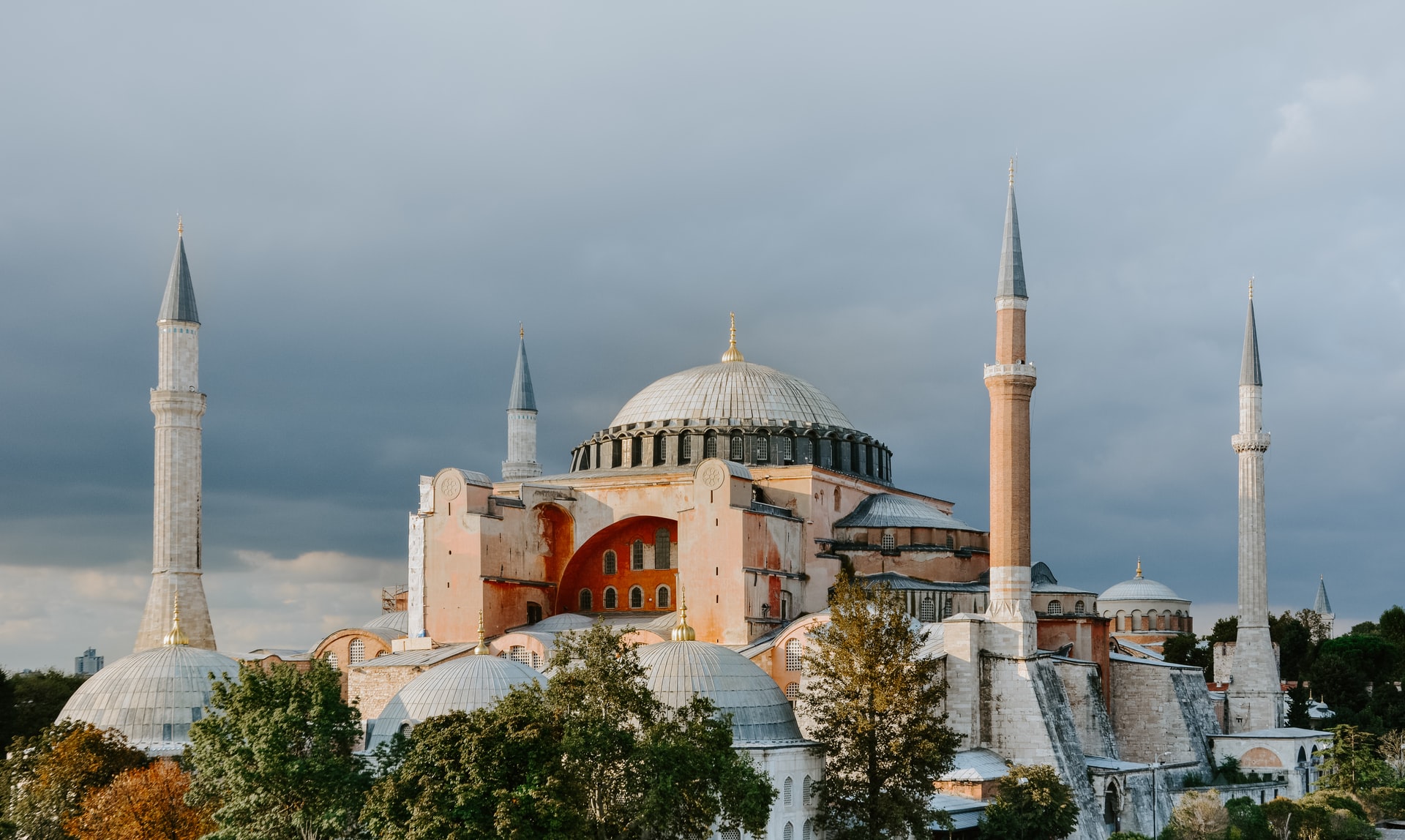Christianity was made the official religion of the Roman Empire in 326 C.E, a move that solidified the Edict of Milan, a proclamation enacted by Emperor Constantine in 316 C.E. As such, Roman architecture became moulded to fit Christian uses and the architectural advancement of the aisled basilica saw it become commonplace in Christian churches of the time. With the fall of the Western Roman Empire in the 5th Century, the architectural style and practices used for centuries before fell out of fashion in parts of Europe. However, the style maintained popularity in the eastern segment of the Empire, known during the late antiquity as Byzantium. Taking existing Roman forms and ideas, the Byzantine Empire saw rise to impressive structures such as the Hagia Sophia in Constantinople (Modern day Istanbul) and St Mark’s Basilica in Venice.
Development of the dome:
First conceived in the Roman Empire, the dome became a staple architectural form in the Byzantine Empire throughout the late antiquity. By incorporating central domes, Byzantine architects were able to allow more light into the central areas of a basilica. One of the most famous examples of this is the Hagia Sophia in Constantinople (Pictured top), a magnificent structure finished in 537 C.E that used a number of sub-domes in addition to the central dome to create an airy space with excellent acoustic properties. A key addition to Byzantine domes was the introduction of pendentives – curving triangles used to bridge the gap between the round domes and the angular, square building below. Pendentives made it possible for architects to design structurally stable central basilica domes such as those seen in the Hagia Sophia.

Decorative style:
The transition from Greek to Roman architecture saw a more decorative vernacular used, and the transition from Roman to Byzantine was no different. Ornate and luxuriant mosaics were used to decorate the interiors and often gold-backed tiles were chosen to give a divine and prosperous appearance. In the inner narthex of the lesser known Chora church, there are a multitude of beautiful Byzantine mosaic and fresco religious depictions. The spread of a more decorative style was not exclusive to the interiors, with exterior features such as column capitals being given a similar stylistic appearance. Adapted from Corinthian capitals, the Byzantine capitals were adorned with the traditional acanthus leaves alongside stylised birds, plants and other natural forms. With its culture deeply rooted in religion, Byzantine architecture was steeped in motifs and decorative religious imagery acting as its basis for a coherent aesthetic style.

Symmetry and Structure:
A fundamental component of religion is order and hierarchy – this translated into architectural terms tends to appear in the form of axially symmetrical designs or cruciform plans. The four arms of equal length that extend from a central basilica form a cross shape when aerially viewed – lending itself to religious imagery. Byzantium, or the Eastern Roman Empire, was at the confluence between two forms of civilisations – the west and the east. As such, the style was very much a holistic fusion of ideas. Much of the structural practices used by Byzantine architects were inspired by symmetrical and geometrically angular Roman and Greek designs, something that can be attributed to the shift eastwards of the Roman Empire. With regard to the decorative embellishments and adorning features that were used on both the interior and exterior, there is more of an Eastern influence from states such as the Parthia and Babylonia.
In terms of geographic and cultural location, the Byzantine period represents the greatest overlap between Western and Eastern influences. However, its importance in Eastern Europe is evident in the architecture that followed for centuries as compared with the Romanesque style used in Western Europe, the Byzantine style influenced societies such as the Ottoman Empire.

